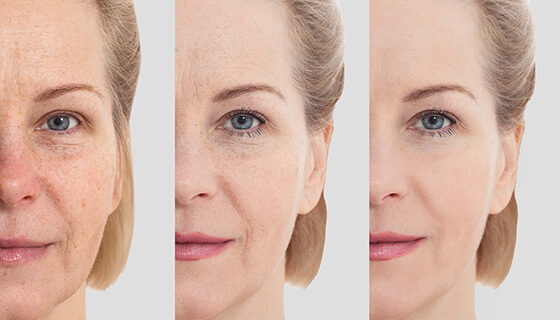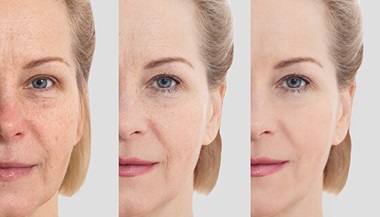Neck Lift
What is a neck lift?
The medical term for a neck lift is platysmaplasty. The procedure surgically removes excess skin and fat from the neck to address age-related wrinkling and creasing in this area, and provide a smoother, slimmer profile.
A cosmetic neck lift may be performed on its own, or in conjunction with another procedure such as a facelift, soft tissue augmentation with dermal fillers or eye lift.
Consulting a Plastic Surgeon for a Neck Lift
It is important to consult with an expert plastic surgeon who specializes in cosmetic surgery. During the person’s consultation for a possible neck lift, the surgeon will ask about:
-
Medical history and physical health, including:
-
A history or smoking
-
Cardiovascular disease
-
Diabetes
-
High blood pressure or other circulatory disorders
-
An unusual tendency to scar
-
Any disorders related to blood clotting
-
-
Skin type, ethnic background and age
-
Attitude and expectations
In addition, the surgeon will explain:
-
What the person can expect from the procedure
-
Where the surgery will take place
-
Options for anesthesia
-
Possible complications
-
Other recommended procedures
Neck Lift Surgery: Procedure and Care
Neck surgery can take place in the surgeon’s office-based surgical facility, an outpatient surgery center or in a hospital.
The surgeon will ensure the person is comfortable during the procedure by using anesthesia. A general anesthesia puts the person in a deep sleep for the surgery. Sedative medications allow the patient to remain awake but relaxed, with local anesthesia so there is no pain.
The procedure itself takes several hours, during which the surgeon makes small incisions around and behind the ear, and a very small one under the chin. After tightening the muscles in the neck and removing extra skin and fat, the surgeon closes the incisions and applies a pressure dressing around the person’s head and underneath the chin.
Neck Lift Surgery: Recovery
Afterward, the person may notice that the neck feels tight, but in most cases pain is not a problem. There may be bruising, which fades in a couple of weeks. Any scars resulting from the procedure are hidden under the chin or around the contours of the ears.
It is important to avoid lifting heavy items (including children and pets) for the first few weeks.
Most people who have undergone a neck lift will notice that pain, swelling and bruising resolve within two weeks, and the new contours of the neck will start to be visible. It may take up to three months for the swelling to go down.
It is extremely important to follow the surgeon’s post-surgery instructions carefully, especially:
-
Avoid certain activities and environments
-
Alert the surgery team immediately in the event of any problem or unexpected change, especially signs of infection such as fever, redness, excessive pain or pus at the incision
-
Keep follow-up appointments
Achieving a Natural-Looking Neck Lift
Seminar Saving Face: Advice to Help Freshen Aging Skin

Age-related changes to the face don’t have to be noticeable. Learn about surgical and nonsurgical options to address signs of aging from Dr. Kofi Boahene.






